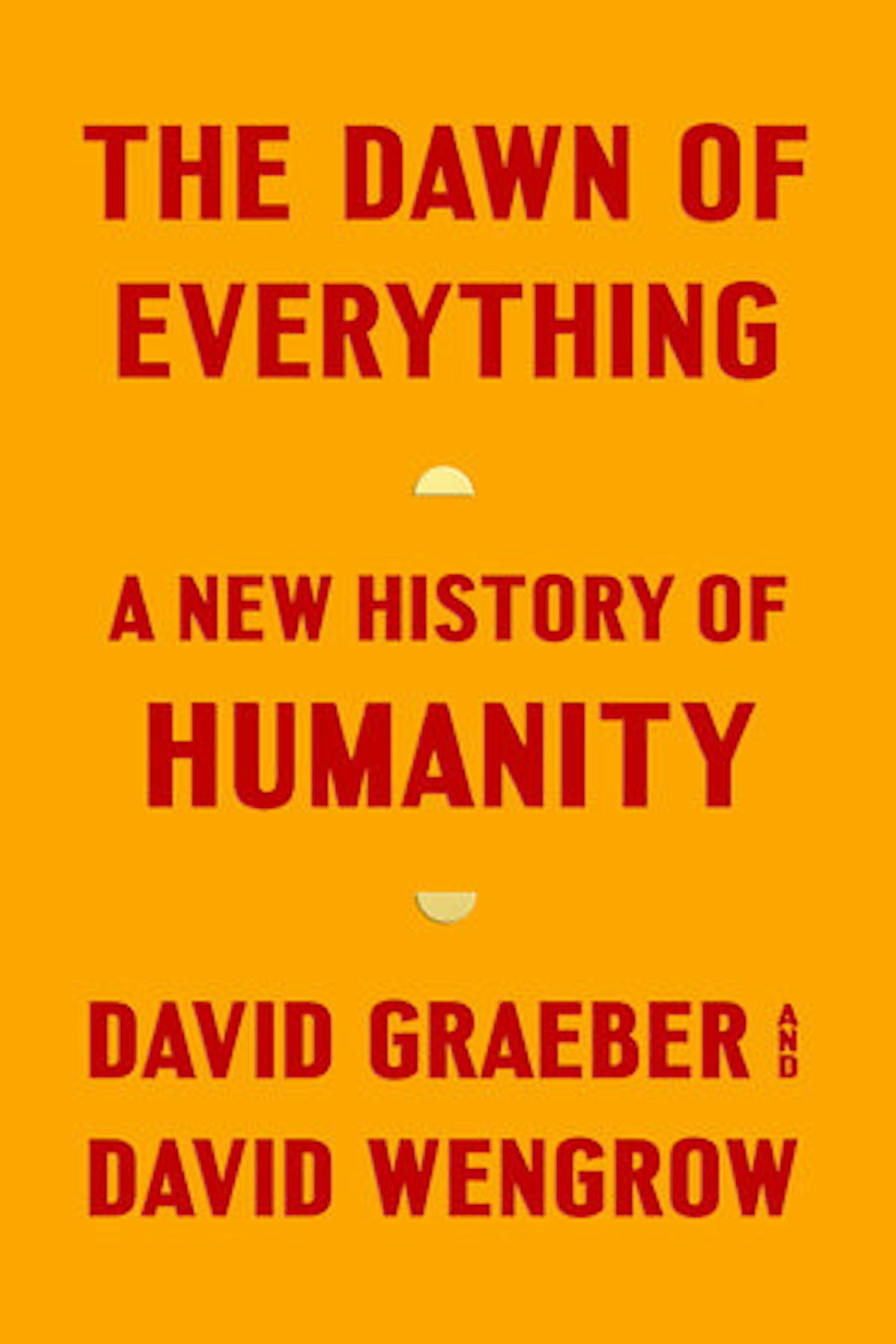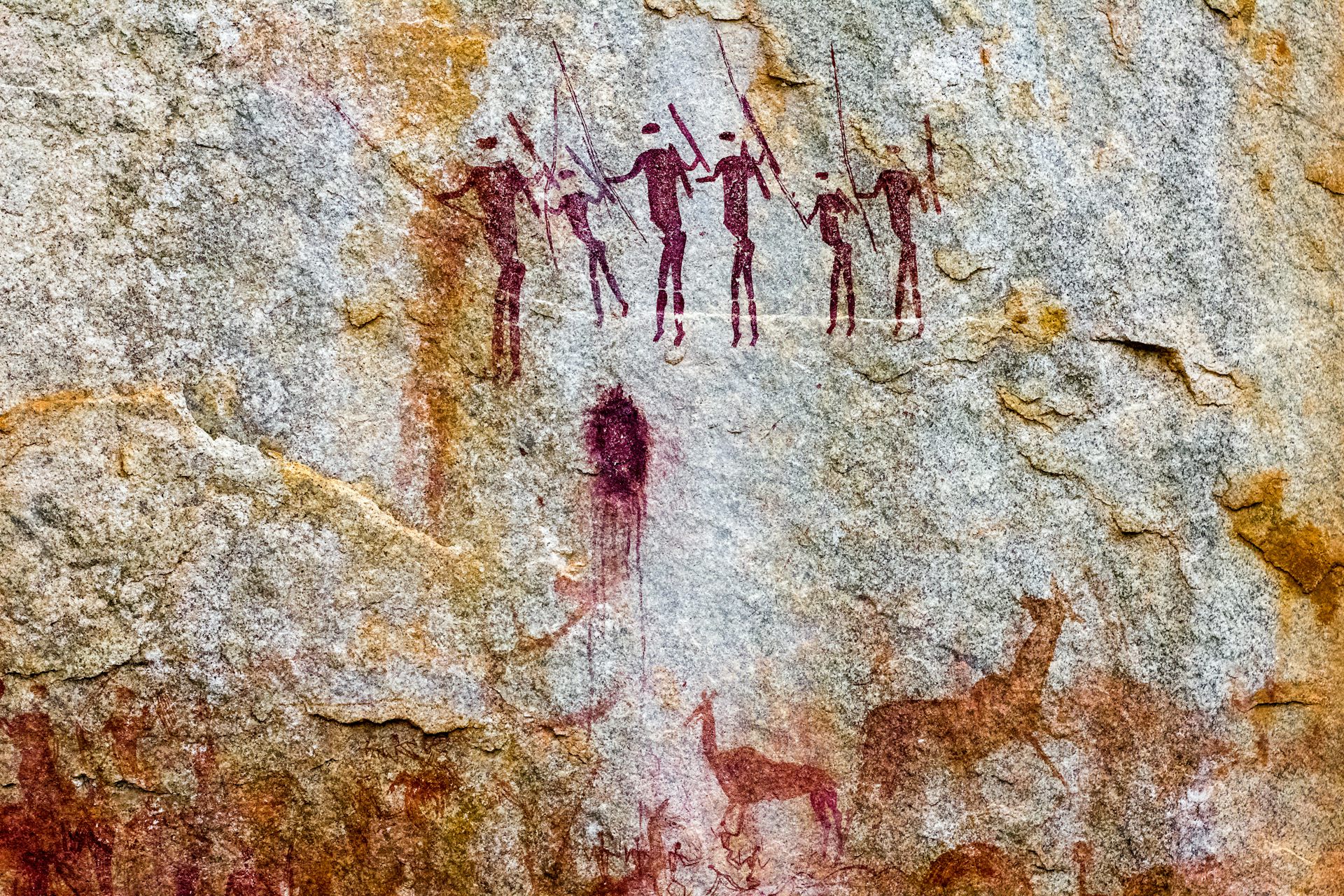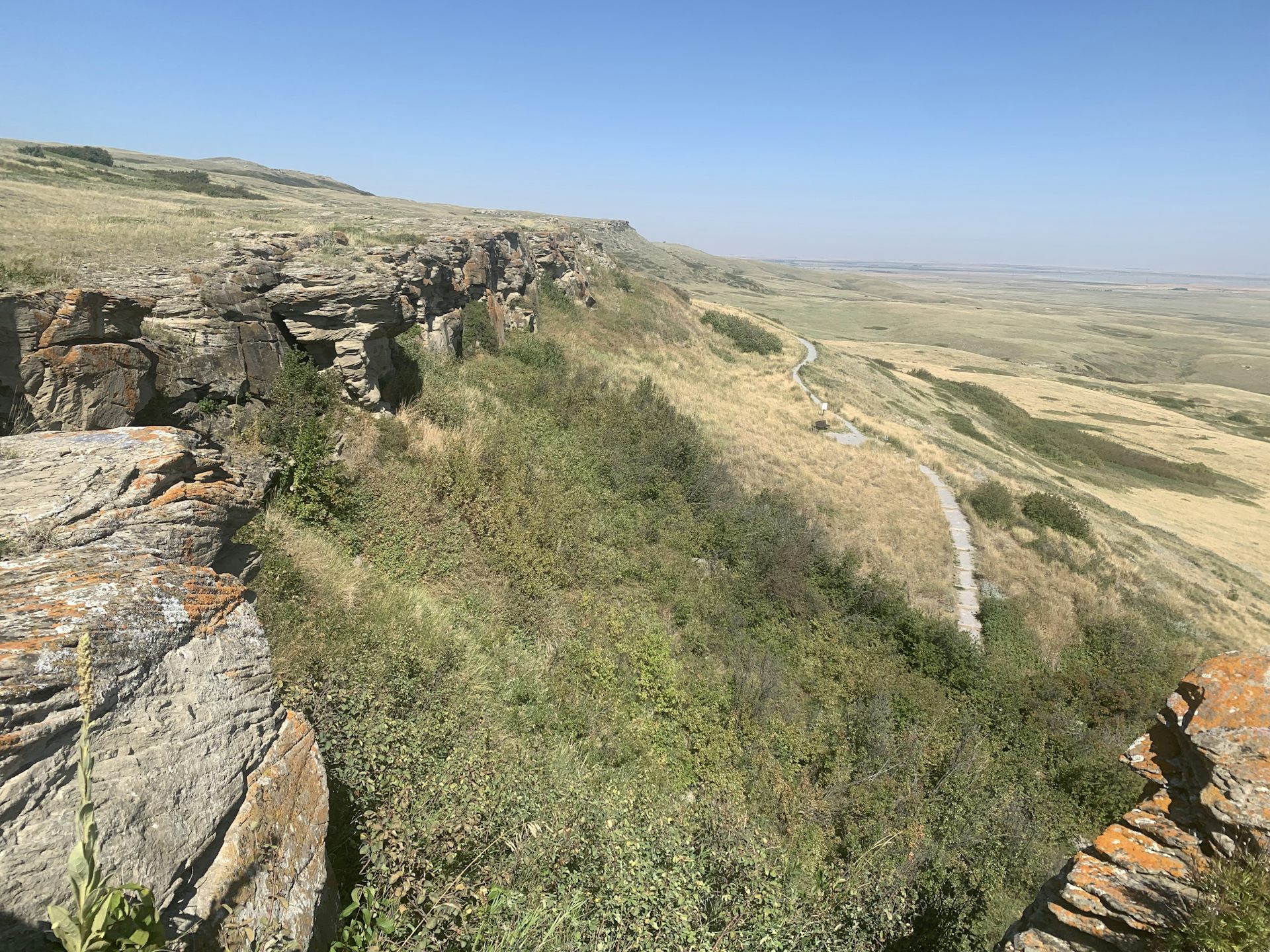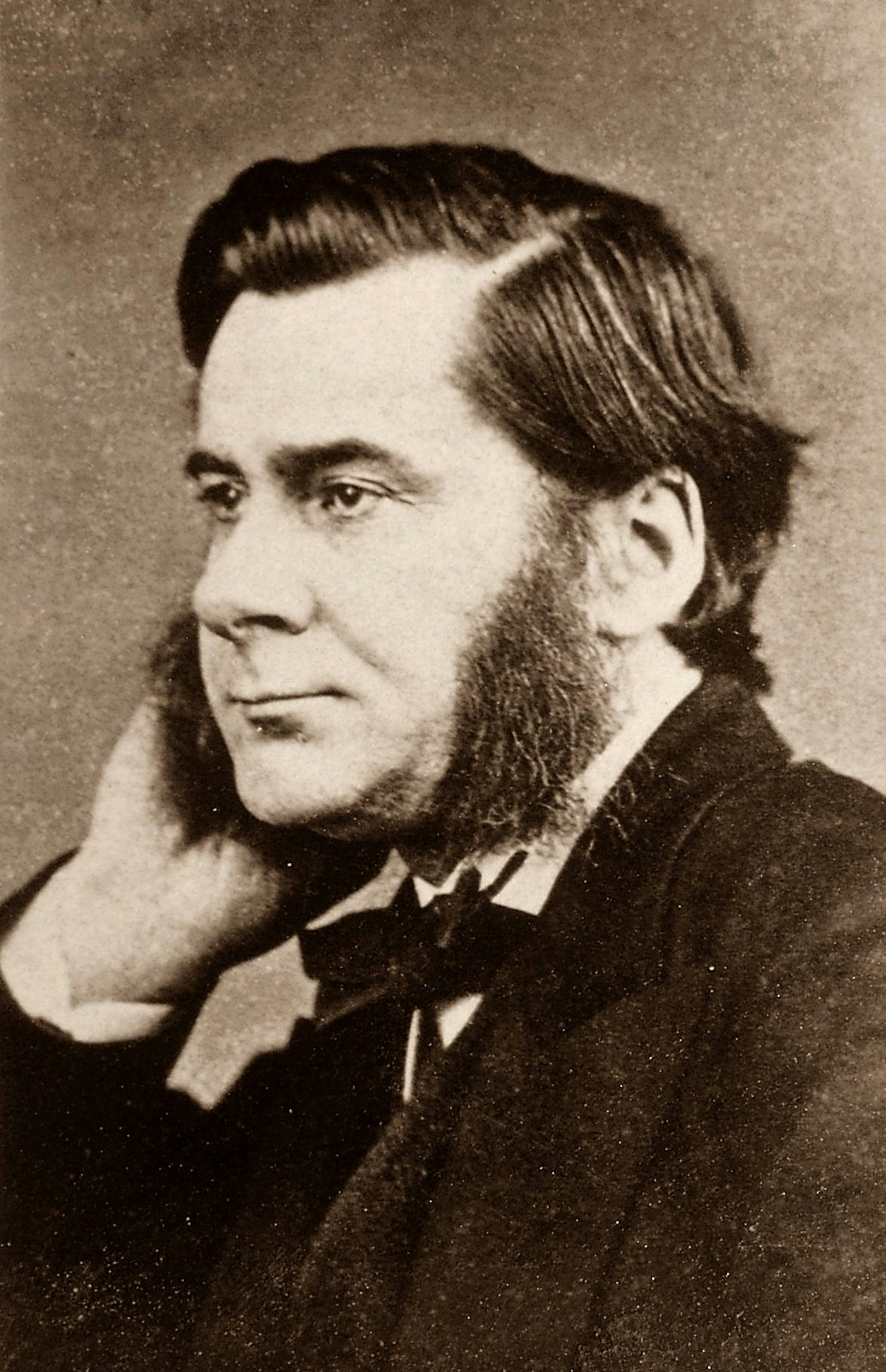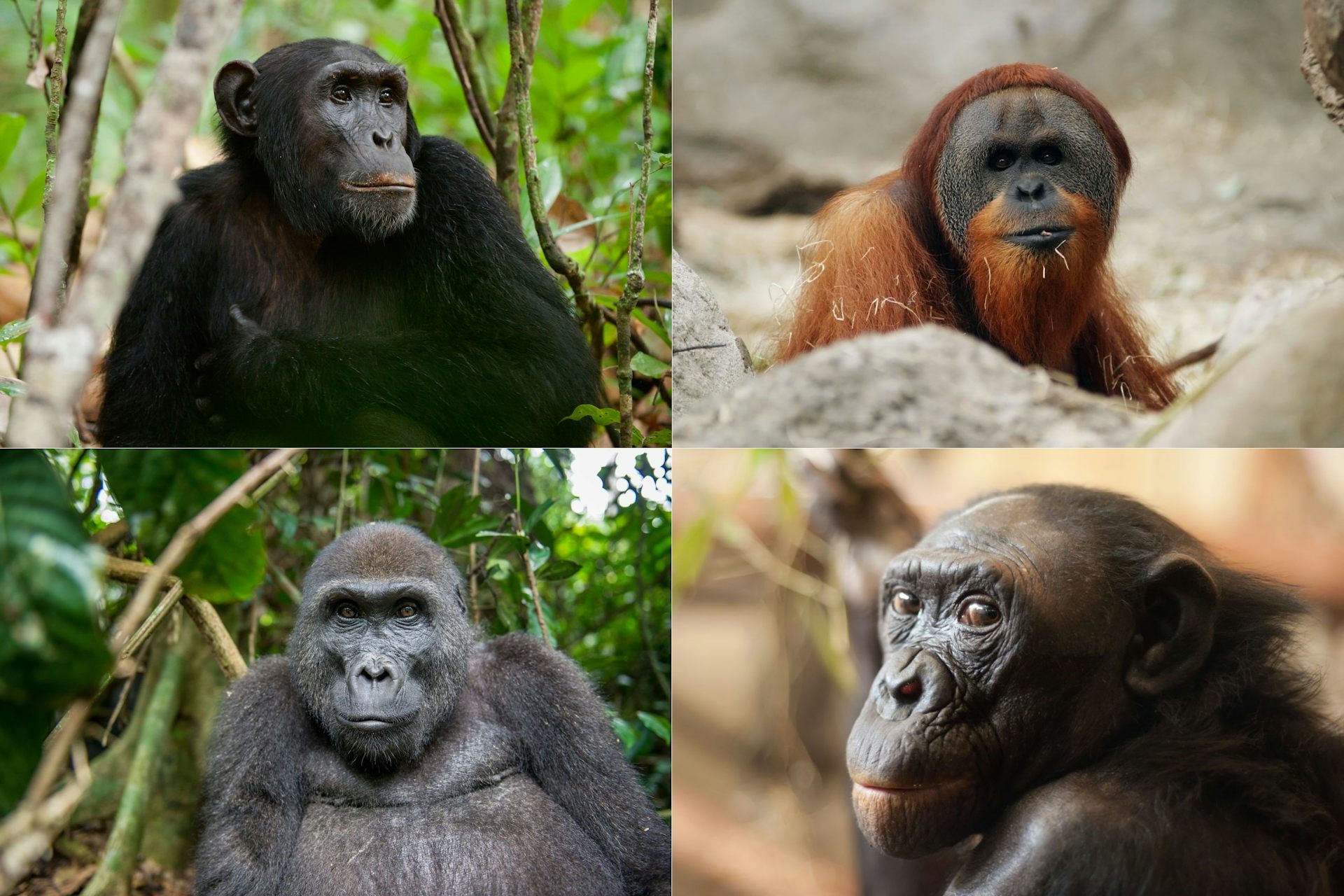My last blog post dealt with how human cultures evolved by a process which, while maybe not being identical with Darwinian evolution by natural selection, is closely analogous to it, and how it reflected diverse origins in diverse populations affected by wide environmental differences across the range of human habitation.
This is in complete contrast to the narrow culture assumed in the Bible where there is no attempt to explain human cultural origins or even any awareness that it is something to be explained, just as the origin of living creatures and even the Earth itself needed to be explained, albeit with the naïve guesses of people ignorant of science and little or no understanding of biology, geology or cosmology.
This post should disturb Creationists even further because it flies in the face of anything the Bible implies about human origins. Bible literalist Creationists must believe that all humans are derived ultimately from a single couple, magically created in a 'garden' somewhere in the Middle East.
Bible scholars traditionally place this 'Garden of Eden' somewhere in Mesopotamia, near the confluence of the Tigris and Euphrates rivers, citing:
The LORD God made all kinds of trees grow out of the ground—trees that were pleasing to the eye and good for food. In the middle of the garden were the tree of life and the tree of the knowledge of good and evil. A river watering the garden flowed from Eden; from there it was separated into four headwaters. The name of the first is the Pishon; it winds through the entire land of Havilah, where there is gold. (The gold of that land is good; aromatic resin and onyx are also there.) The name of the second river is the Gihon; it winds through the entire land of Cush. The name of the third river is the Tigris; it runs along the east side of Ashur. And the fourth river is the Euphrates.The problem for Creationists is that a team of Turkish researchers from Hacettepe University and Middle East Technical University, Ankara, Turkey have just shown that the people living in that area between 10,500 and 9,500 years ago had a genetic and cultural makeup that indicates multiple origins from across the 'Fertile Crescent' and that the area was a melting pot and fusion centre, rather than an origin. This conclusion came from an analysis of the DNA extracted from the remains of 13 individuals together with cultural artifacts excavated at Çayönü Hill in the Ergani district of Diyarbakır between 8,500-7,500 BC.
Genesis 2: 9-14:
As the Hacettepe University news release explains:
Çayönü Hill was first discovered in 1963 by Halet Çambel and Robert J. Braidwood. The excavations that Prof. Dr. Çambel started systematically in 1968 were continued with a break from time to time. During the excavations conducted under the direction of Prof. Dr. Aslı Erim Özdoğan, it was determined that the first settlement in the region started approximately 12,000 years ago and that the region was inhabited until 6,000 years ago. During this long settlement, Çayönü Hill hosted different cultures. Archaeological remains show that the region has a dynamic cultural structure and that the architectural structures have changed over time. In addition, anthropological studies revealed that early examples of various modifications applied to the body, such as artificial skull shaping and trepanation, existed in this culture.
Researchers set out to understand the genetic makeup of people with this dynamic cultural structure. It is known that DNA molecules in human remains exposed to high temperatures due to climatic conditions throughout Mesopotamia are very difficult to preserve. Therefore, in ancient DNA studies carried out to date, the region was only represented by the genome of a single individual from the Boncuklu Tarla excavation site. Dr. Lecturer Füsun Özer stated that under these conditions, Çayönü individuals had a higher level of DNA preservation than expected and continued: “We scanned 33 skeletons from Çayönü Hill, dated between 10,500 and 9,500 years ago, for DNA conservation. Of these, 13 individuals had enough DNA molecules to allow genome analysis. In this region, it was surprising for us to get close to 40 percent success from such old individuals.”
This study, carried out in Upper Mesopotamia, in the northernmost part of the Fertile Crescent, the center of domestication of plants and animals, revealed that the region was a center of attraction during the Pre-Pottery Neolithic Period, and people from the surrounding geographies mingled in the region. The genetic makeup of the people of the region bears traces from the eastern and western sides of the Fertile Crescent.
Although genetic diversity is observed to be high, no major change is observed in the genetic structure of the population during the 1,000 years examined. Despite this, the fact that a two-year-old girl is genetically closer to the communities living on the eastern side of the Fertile Crescent reveals that people from outside came to Çayönü and could live in this village. The etching mark found on the parietal bone of this girl presents the first example of the tradition still practiced today. Prof. Dr. Yılmaz Selim Erdal, one of the research team, stated that cauterization as a treatment tool is a common practice in Anatolia, and the Çayönü example is one of the oldest examples of this practice. This specimen, with traces of infection on its inner surface, indicates that it was probably treated with a method including magical-ritual application in order to eliminate the negativities caused by the infection. Erdal stated that, together with the trepanation sample found in Çayönü, these data indicate that Mesopotamia had a very dynamic and somewhat complex cultural dynamic in the Neolithic Age.The central location of Upper Mesopotamia in Southwest Asia is also reflected in the gene pool of the society. The demographic patterns of the Central Anatolian Neolithic societies in the east and west of the Fertile Crescent, represented by the Zagros Neolithic societies, appear as a mixture in this region.
Dr. Ezgi Altınışık, first-author Human-G Laboratory
Department of Anthropology
Hacettepe University, Beytepe, Ankara, Turkey.
Another important finding from the study was to determine kinship relationships in Early Neolithic communities. In the Early Neolithic Period, it was a common tradition to bury the dead in the floors of houses in and around Anatolia. The kinship analyzes [sic] revealed that the individuals buried in the same house in Çayönü were mostly close relatives. Prof. Dr. Mehmet Somel from the Department of Biological Sciences at Middle East Technical University said that they interpreted these results as the social structure of society being organized within the framework of biological kinship. It is seen that this family-centered burial tradition observed in Early Neolithic communities has changed over time, and in some settlements from the Late Neolithic period such as Çatalhöyük, social ties besides biological kinship play a role in burial in the same place.
Finally, researchers sought to analyze how Upper Mesopotamian peoples influenced surrounding communities in later periods. Archaeological studies indicated that Upper Mesopotamia culturally influenced Anatolia during the Late Neolithic period. Genetic analyzes [sic] also revealed that some of the ancestors of people who lived in Central Anatolia (Çatalhöyük) and Marmara (Barcın Höyük) 1,000 years after Çayönü came from Upper Mesopotamia. This shows that people of relatively distant geographies interact not only with the exchange of ideas from afar, but also with human movement.

(A) Timeline of ancient Southwest Asian individuals used in the analyses. Colored horizontal bars at the bottom represent the subperiods of the Neolithic Era in Southwest Asia. (B) The map shows EP and Neolithic populations from Southwest Asia. Shaded areas mark PPN period cultural zones (referred to as the Aceramic period in C Anatolia). (C) Çayönü building types and their approximate dates of use, considered as evidence for Çayönü’s cultural openness and ingenuity. Modified from (112). (D) The first two dimensions of the MDS plot of genetic distances. The MDS summarizes the genetic distance matrix among ancient genomes calculated as (1 − outgroup f3) values. Outgroup f3-statistics were calculated as f3(Yoruba; individual1, individual2). The labels represent the following sites: Anatolia EP: Pınarbaşı; Anatolia PPN: Boncuklu and Aşıklı Höyük; Anatolia PN: Çatalhöyük and Barcın Höyük; Levant EP: Natufian; Levant PPN: Ain’ Ghazal, Kfar HaHoresh, Motza, and Ba’ja; C Zagros N (Central Zagros Neolithic): Ganj Dareh, Tepe Abdul, and Wezmeh Cave; S Caucasus EP (South Caucasus EP): Kotias and Satsurblia. See note S5 for a definition of “Anatolia.” PPNA, Pre-pottery Neolithic A; PPNB, Pre-pottery Neolithic B; PPNC, Pre-pottery Neolithic C.
 Copyright: © 2022 The authors.
Copyright: © 2022 The authors.Published by American Association for the Advancement of Science.
Open access. (CC BY 4.0)
AbstractIt probably wasn't the intention of the researchers to refute the Bible so comprehensively, yet they did so, simply by revealing the truth, as is so often the case with scientific discoveries.
Upper Mesopotamia played a key role in the Neolithic Transition in Southwest Asia through marked innovations in symbolism, technology, and diet. We present 13 ancient genomes (c. 8500 to 7500 cal BCE) from Pre-Pottery Neolithic Çayönü in the Tigris basin together with bioarchaeological and material culture data. Our findings reveal that Çayönü was a genetically diverse population, carrying mixed ancestry from western and eastern Fertile Crescent, and that the community received immigrants. Our results further suggest that the community was organized along biological family lines. We document bodily interventions such as head shaping and cauterization among the individuals examined, reflecting Çayönü’s cultural ingenuity. Last, we identify Upper Mesopotamia as the likely source of eastern gene flow into Neolithic Anatolia, in line with material culture evidence. We hypothesize that Upper Mesopotamia’s cultural dynamism during the Neolithic Transition was the product not only of its fertile lands but also of its interregional demographic connections.
Altınışık, N. Ezgi; Kazancı, Duygu Deniz; Aydoğan, Ayça, et al. (2022) A genomic snapshot of demographic and cultural dynamism in Upper Mesopotamia during the Neolithic Transition
Science Advances; 8(44), eabo3609. DOI: 10.1126/sciadv.abo3609
Copyright: © 2022 The authors.
Published by American Association for the Advancement of Science. Open access
Reprinted under a Creative Commons Attribution 4.0 International license (CC BY 4.0)
Not only was there never a founding couple (as though that idea ever carried any merit) but the people in the area at the time in which the tale was set had multiple origins from much earlier populations and cultures. Of course, the Bible's authors were entirely ignorant of the facts and the evolutionary history of the people about whom they wrote, and simply made up stories to explain the unknown - and of course, as with so much else, got it hopelessly wrong.
And of course, without Adam and Eve, there was no original sin, no need for salvation and redemption and no need for Jesus, and yet the hideous superstition of vicarious redemption through a human blood sacrifice, and the need to be reconciled with an irascible god to avoid eternal torture, is still used by parasitic priests and imams to control and terrorise ignorant and superstitious people and to justify their demand to be allowed to make laws governing the rest of us and run society in their interest.
Science teaches us how to think. Tweet









